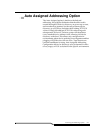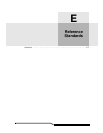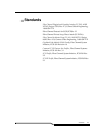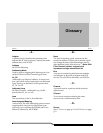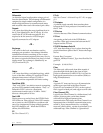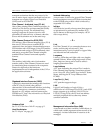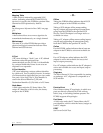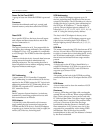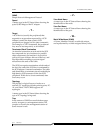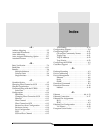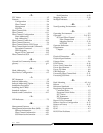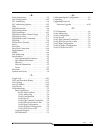
Power On Self Test (POST) Shortwave
Glossary gl-5
Power On Self Test (POST)
A group of tests run when the FCR200 is powered
on.
Processor
Contains the arithmetic and logic, control, and
internal memory units that control the FCR200.
- R -
Reset SCSI
For a specific SCSI bus, the host clears all inputs
and outputs and then resets the bus and all the
devices connected to it.
Responder
The logical function in an N_Port responsible for
supporting the exchange initiated by the originator
in another N_Port. A FC responder is comparable
to a SCSI target. The FCR200 is often the responder.
Router
A device which selectively forwards data between
storage networks based on administratively
defined preferences. The forwarding decision is
based on paths between address mappings among
dispersed initiators and targets.
- S -
SCC Addressing
A menu name. SCSI-3 Controller Commands
(SCC) addressing is used to address SCSI devices
attached to the FCR200 using the SCC logical unit
addressing method. In SCC addressing mode, the
FCR200 will respond to FCP commands as in a
SCC controller device.
SCSI
Small Computer System Interface. An industry
standard for connecting peripheral devices and
their controllers to an initiator.
SCSI Adapter
A 16-bit fast/wide differential or 8-bit narrow
single-ended physical connection between the
FCR200 and the SCSI devices. Each SCSI adapter
supports up to sixteen (for fast/wide) or eight (for
narrow) SCSI devices, including itself.
SCSI Addressing
A fast/wide SCSI adapter supports up to 16
devices, including itself. Each device has its own
unique SCSI address. The SCSI address of a device
dictates the device’s priority when arbitrating for
the SCSI bus. SCSI address “7” has the highest
priority. The next highest priority address is “6”
followed by 5, 4, 3, 2, 1, 0, 15, 14, 13, 12, 11, 10, 9, 8,
with “8” being the lowest priority address.
The fast/wide SCSI adapter is factory set to
address 7. A narrow SCSI adapter supports up to
eight devices, including itself. SCSI address “7”
has the highest priority followed by 6, 5, 4, 3, 2, 1,
and 0.
SCSI Bus
The means of transferring SCSI data between SCSI
devices. It is an 8-bit or 16-bit bus that supports up
to eight or sixteen devices (including itself), in any
mix of initiators and targets, with the limitation
that at least one initiator and one target must be
present.
SCSI Device
A single unit on the SCSI bus, identifiable by a
unique SCSI address. A SCSI device can act as an
initiator or target. For SCSI-3, each SCSI device
supports up to sixteen LUNs.
SCSI Port
An opening at the back of the FCR200 providing
connection between the SCSI adapter and the SCSI
bus.
SCSI Status
A menu name used to show the number of SCSI
devices on the bus.
Shortwave
Lasers or LEDs that emit light with wavelengths
around 780 nm or 850 nm. When using multimode
fibre (50 nm), shortwave lasers can be used with
FC links less than 500m. To achieve longer lengths,
single-mode fibre is required. The preferred fibre
core size is 50 micron as this fibre has large
bandwidth so that the distance is limited by the
fibre attenuation. A 62.5 micron core size is also
supported for compatibility with existing FDDI
installations. Fibre of this type has smaller
bandwidth and, in this case, the distance is limited
by the fibre bandwidth.



